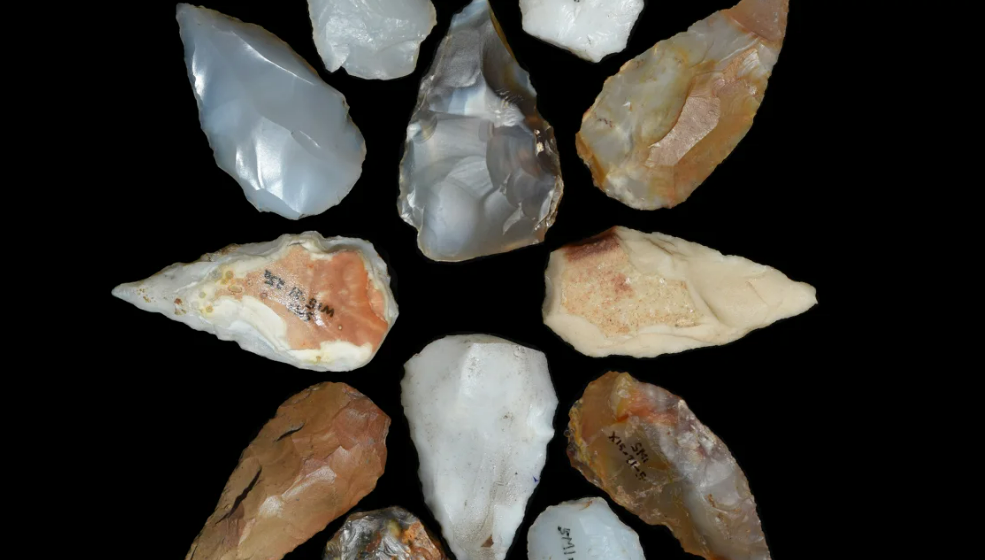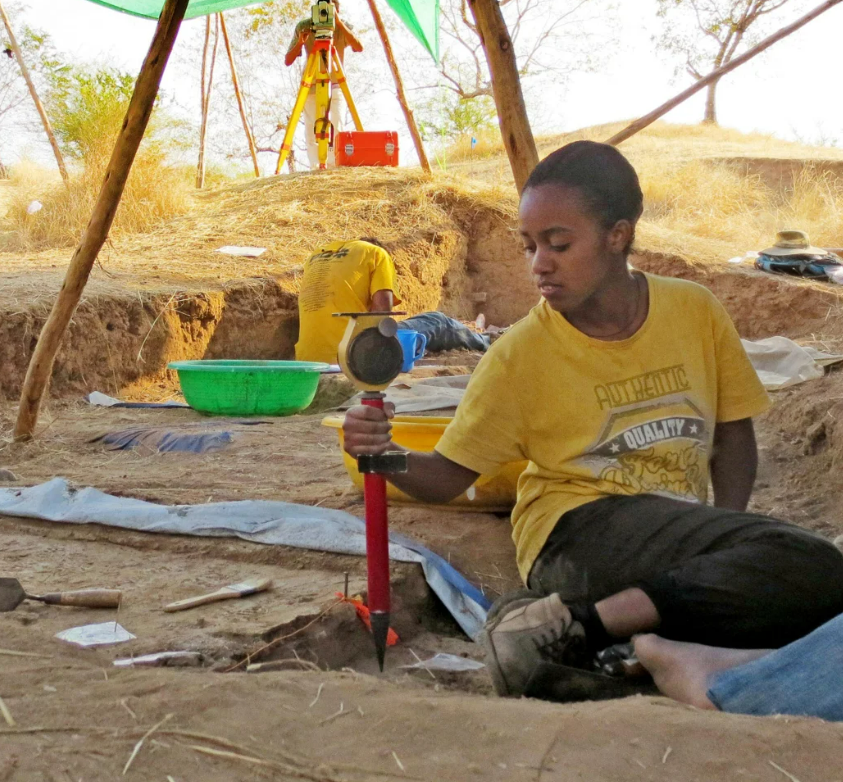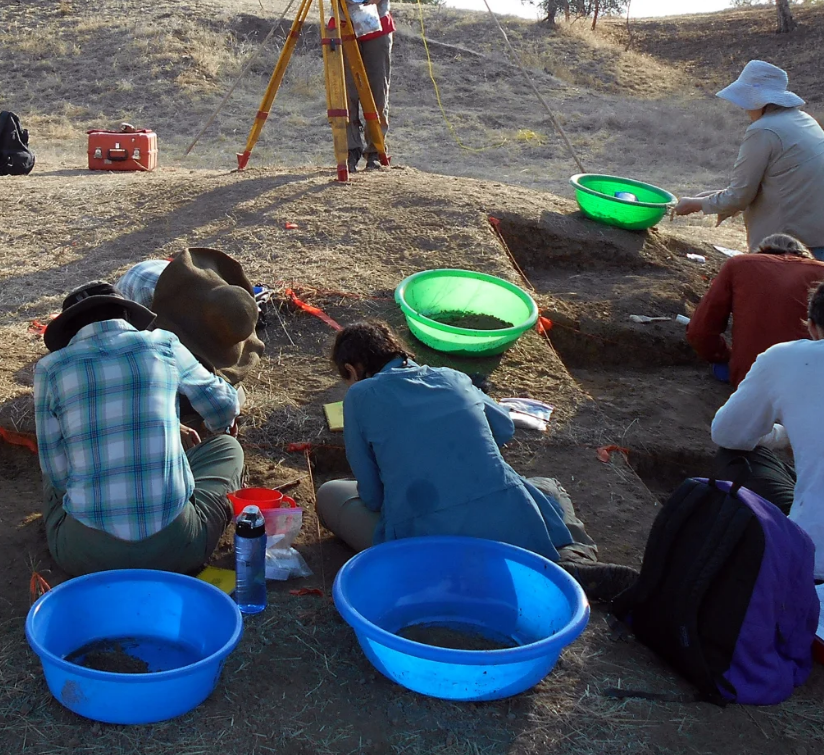
A momentous eruption in Earth’s history, possibly one of the largest, occurred about 74,000 years ago at Mount Toba in Sumatra, ushering in a potentially profound disruption in global climate patterns.
Initial conjecture among scientists suggested that the volcanic winter ensuing from this cataclysmic event could have led to the near-extinction of early human populations, with genetic evidence indicating a drastic decline in numbers. However, a recent groundbreaking study conducted at an archaeological site in northwest Ethiopia, once inhabited by early modern humans, presents a contrasting narrative, challenging the notion of an apocalyptic outcome.
The study, focusing on the Shinfa-Metema 1 site near Ethiopia’s Shinfa River, reveals a surprising resilience among human inhabitants in adapting to the arid conditions precipitated by the distant volcanic eruption. Analysis of microscopic volcanic glass fragments, discovered alongside stone tools and animal remains within the sediment layers of the site, provides compelling evidence of human occupation both preceding and following the eruption, spanning over 4,000 miles from the volcanic source.
Lead author John Kappelman, a professor at the University of Texas at Austin, highlights the significance of these minuscule fragments, emphasizing their analytical potential despite their diminutive size. Through meticulous examination of fossils, artifacts, and geological data, the research team unravels the story of human perseverance in the face of environmental upheaval, shedding light on how these early inhabitants thrived despite the challenges posed by the volcanic event.
Catching fish

In their quest to comprehend the climatic conditions surrounding the eruption, Kappelman and his team delved into the analysis of oxygen and carbon isotopes, variations of the same element, derived from ostrich eggshells and fossilized mammal teeth. This examination illuminated insights into water consumption patterns and revealed that the animals consumed vegetation more suited to arid environments.
“The isotopes become part of the hard tissues. Hence, we examine the enamel of mammalian teeth, as well as the eggshell of ostriches,” Kappelman elucidated.
Furthermore, an assessment of the site’s botanical and zoological composition uncovered a surplus of fish remains following the eruption. Although the proximity of the site to the river might have predisposed such a discovery, the study highlighted the rarity of fish findings in contemporaneous Stone Age sites.
“Following the onset of Toba, there’s a notable spike in the proportion of fish in the diet. The capture and processing of fish increased nearly fourfold,” Kappelman remarked.
The team postulated that the seemingly paradoxical surge in fish consumption could be attributed to the drier climate. As the river contracted, fish became confined to water pools or shallower streams, rendering them more accessible targets for hunters amidst the extended dry seasons.
Blue vs. green corridor

The team proposed the existence of a “blue corridor” potentially formed by the fish-abundant water holes, along which early humans migrated north out of Africa after the depletion of fish resources. This theory stands in contrast to prevailing models, which suggest that human migration out of Africa primarily occurred along “green corridors” during periods of higher humidity.
“This study… showcases the remarkable adaptability of Homo sapiens populations, demonstrating their capacity to thrive in diverse environments, whether hyper-humid or hyper-arid, even amidst catastrophic events like the Toba volcano’s massive eruption,” commented Ludovic Slimak, a researcher at the French National Centre for Scientific Research and the University of Toulouse, who was not involved in the research.
Furthermore, the study authors examined the geology of the ancient riverbed, indicating that it flowed slower and at a lower level compared to its present state.
“We can infer this by observing the size of cobbles,” explained Kappelman. “A highly energetic river can transport larger boulders and cobbles compared to a less energetic one. The cobbles we find from the ancient riverbed are smaller than those found in the river today.”
Exploring the Earliest Arrowheads
In addition to their findings of various artifacts, the researchers unearthed several small triangular points, marking some of the oldest known examples of archery tools. These discoveries offer intriguing insights, suggesting that the inhabitants of the site may have employed bows and arrows for hunting fish and larger prey.
Slimak, whose research in France has focused on similar points dating back 50,000 years, concurred with the assessment of these artifacts in the new study.
“The authors have highlighted compelling evidence pointing to the existence of archery techniques here 74,000 years ago,” Slimak affirmed. “This underscores the advanced technological capabilities of ancient Homo sapiens, indicating a significant emancipation from natural and climatic limitations, crucial factors for comprehending their subsequent migrations across continents and latitudes.”
While it’s widely accepted that various ancient human species left Africa on multiple occasions, the consensus among archaeologists and geneticists is that the most significant dispersal of Homo sapiens, our own species, occurred roughly 70,000 to 50,000 years ago, eventually leading to the establishment of modern human populations across the globe.
Chris Stringer, a prominent figure in human evolution research at the Natural History Museum in London, described the new research as “intriguing,” acknowledging its potential to contribute to understanding the dispersal of early humans.
“I’m certain that each proposition will spark debates among relevant experts, but the authors have presented plausible cases for each scenario they propose,” Stringer commented via email.
He further emphasized that while this research doesn’t dismiss the importance of humid corridors for human dispersal out of Africa, it introduces credible alternative possibilities during more arid periods in prehistory.
